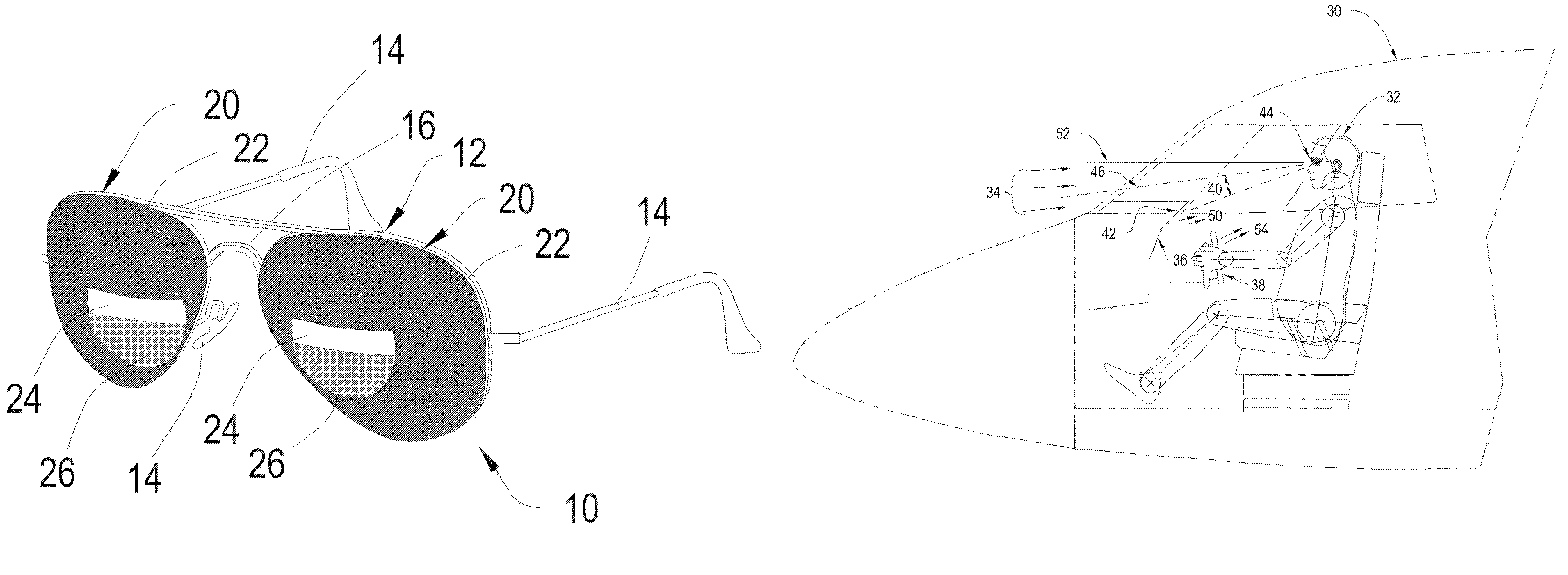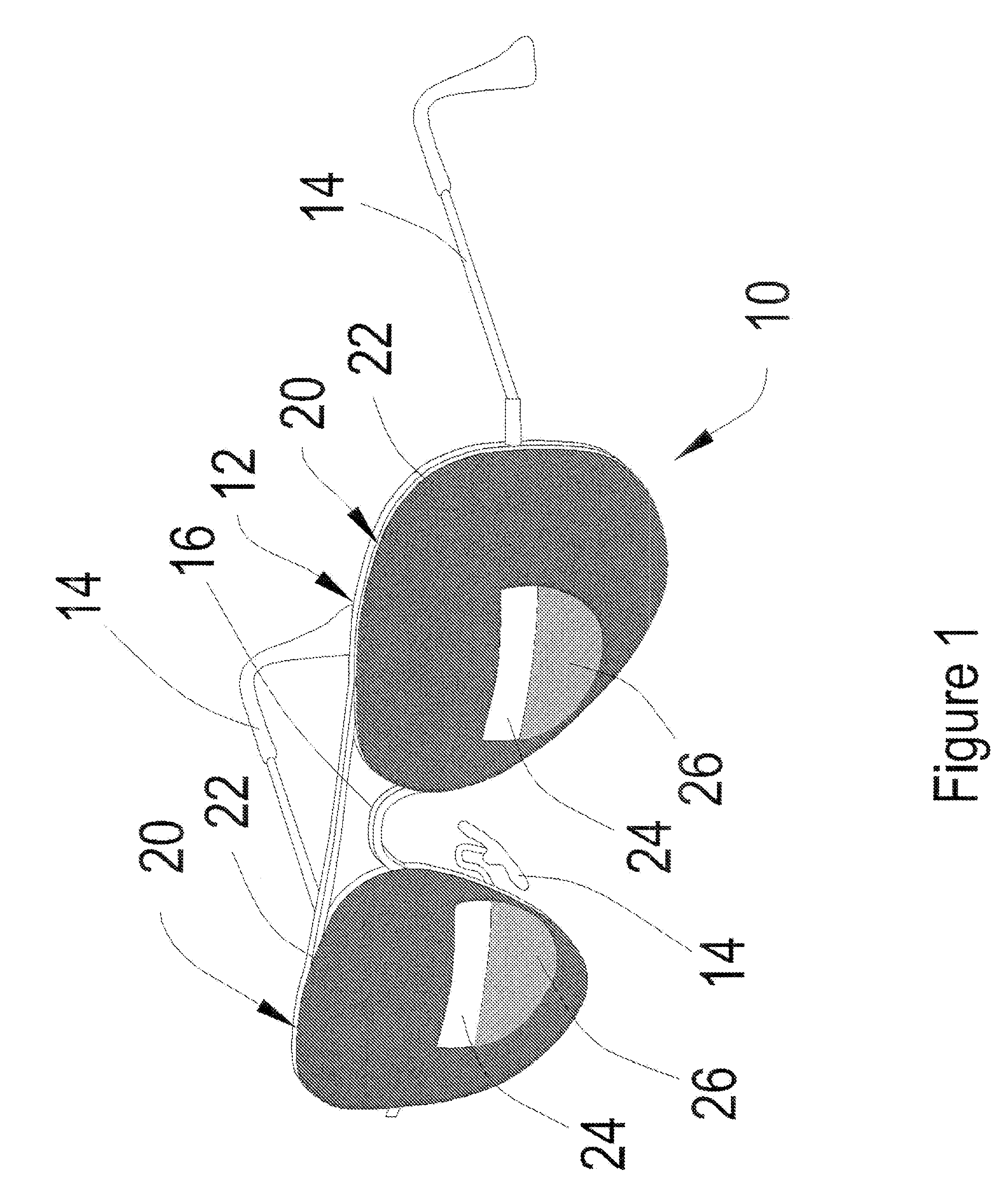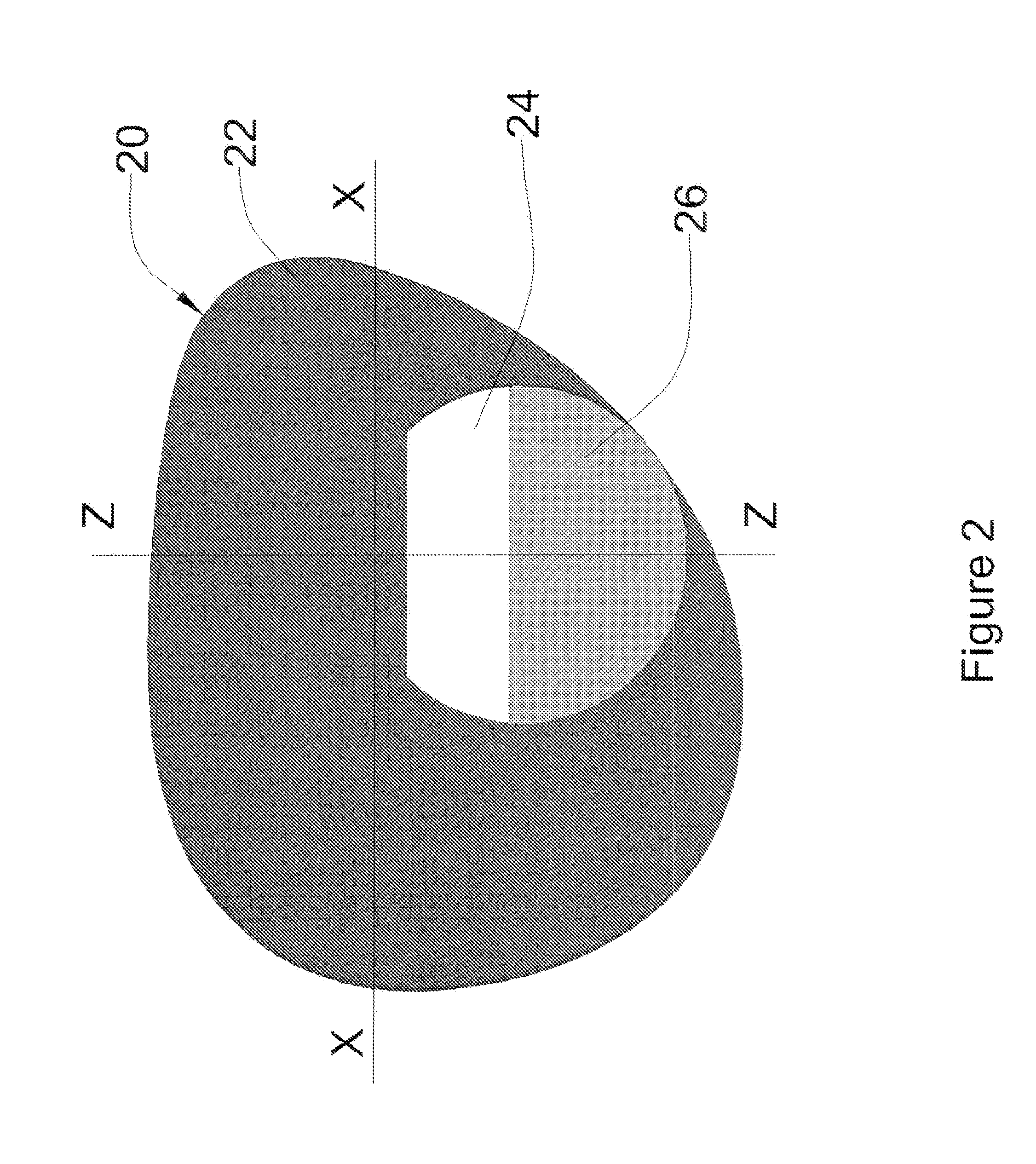Specially tinted lenses for sunglasses for use during flying
a technology for flying sunglasses and lenses, applied in the field of special-purpose sunglasses with lenses, can solve the problems of prior art not being addressed, optical wear created to reduce glare from point sources of light, and optical wear created to reduce glare from broad regions of high illumination, so as to reduce light, easy to see, and easy to see
- Summary
- Abstract
- Description
- Claims
- Application Information
AI Technical Summary
Benefits of technology
Problems solved by technology
Method used
Image
Examples
Embodiment Construction
[0034]The embodiments discussed herein are merely illustrative of specific manners in which to make and use the invention and are not to be interpreted as limiting the scope of the instant invention.
[0035]While the invention has been described with a certain degree of particularity, it is to be noted that many modifications may be made in the details of the invention's construction and the arrangement of its components without departing from the spirit and scope of this disclosure. It is understood that the invention is not limited to the embodiment set forth herein for purposes of exemplification.
[0036]The present invention is directed to specially tinted lenses for use in flying airplanes. In the present invention, the far field of vision has medium to exceptionally dark tinting (Filter category between 2 and 6) to reduce the light from a sunlit sky, over sunlit cloud tops, or in clouds. This enables an aircraft pilot to easily see out of the cockpit into highly illuminated enviro...
PUM
 Login to View More
Login to View More Abstract
Description
Claims
Application Information
 Login to View More
Login to View More - R&D
- Intellectual Property
- Life Sciences
- Materials
- Tech Scout
- Unparalleled Data Quality
- Higher Quality Content
- 60% Fewer Hallucinations
Browse by: Latest US Patents, China's latest patents, Technical Efficacy Thesaurus, Application Domain, Technology Topic, Popular Technical Reports.
© 2025 PatSnap. All rights reserved.Legal|Privacy policy|Modern Slavery Act Transparency Statement|Sitemap|About US| Contact US: help@patsnap.com



